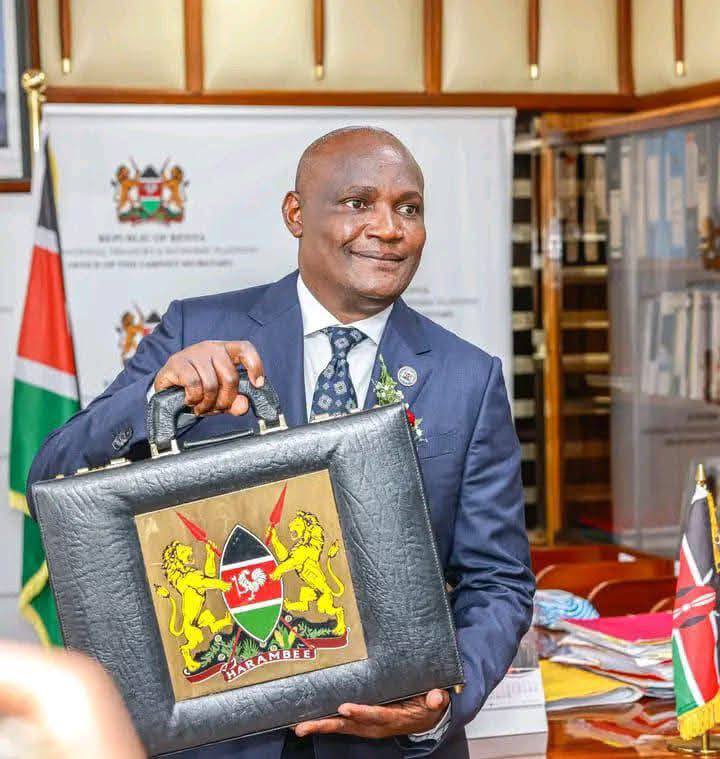Kenya’s 2025/2026 national budget, presented by National Treasury Cabinet Secretary John Mbadi on June 12, totals Ksh4.239 trillion, marking a significant effort to balance economic recovery, development, and fiscal discipline amid rising public debt concerns.
The budget, anchored on a projected economic growth rate of 5.3 percent, prioritises key sectors to drive the Bottom-Up Economic Transformation Agenda (BETA), with education receiving the largest share.
The Ministry of Education’s allocation of Ksh701.1 billion, representing 28.1 percent of the national budget, underscores the government’s commitment to transforming Kenya into a knowledge-driven economy.
However, controversies surrounding budget cuts, pending debts, and implementation challenges reveal a complex landscape. This analysis unpacks the education sector’s allocation, its components, priorities, challenges, and broader implications for Kenya’s development trajectory.
ALSO READ:
Teacher jailed for defilement freed as Court overturns 35-year sentence
Ministry of Education allocation: Ksh701.1 Billion
The education sector’s Ksh701.1 billion allocation is a slight increase from the Ksh677 billion in 2024/2025, maintaining its position as the top-funded sector at 28 percent of the budget. This funding supports a broad spectrum of programs, including school capitation, teacher remuneration, infrastructure development, and technical and vocational education and training (TVET).
The allocation aims to address immediate needs while aligning with long-term goals like the Competency-Based Curriculum (CBC) implementation and universal education access.
Key components of the education budget
Teachers Service Commission (TSC): Ksh387.7 Billion
The TSC consumes the lion’s share of the education budget, with Ksh387 billion allocated for teacher remuneration, recruitment, and capacity building. This includes ksh7.2 billion for hiring intern teachers and Ksh980 million for training teachers on CBC.
ALSO READ:
Jaramogi Oginga Odinga University of Science and Technology benefits from wheelchair donation
However, the budget falls short of addressing critical demands from the Kenya Union of Post-Primary Education Teachers (KUPPET), such as funding for the 2025-2029 Collective Bargaining Agreement (CBA) and hiring 20,000 permanent teachers as pledged by President William Ruto. The lack of funds for teacher promotions and medical schemes has sparked concerns about morale and service delivery.
School capitation and free education programs
Junior Secondary Schools (JSS): ksh28.9 billion is allocated for JSS capitation, supporting the CBC’s rollout. However, a Ksh18.8 billion cut in JSS funding has raised alarms about potential disruptions in CBC implementation. Each JSS learner receives Ksh15, 042, but delays in disbursing capitation funds have left schools struggling with operational costs.
Free Primary Education: Ksh7 billion supports free primary education, maintaining access for over 13 million learners in public schools. However, the per-student capitation of Ksh1, 420 remains inadequate, forcing schools to rely on parental contributions.
ALSO READ:
EACC arrests 5 public servants in fake certificates crackdown exercise
Free Day Secondary Education: Ksh51.9 billion ensures access and quality in secondary schools, with each student receiving Ksh22, 244. An additional Ksh6 billion is allocated for infrastructure, up from Ksh2.8 billion in 2024/2025, to address classroom shortages.
Higher education and TVET
Higher Education Loans Board (HELB): Ksh41 billion supports student loans, addressing the financial barriers faced by university students. However, 23 of 35 public universities are technically insolvent, with debts like the University of Nairobi’s Ksh13 billion hampering operations.
TVET: Funding for TVET includes Ksh5.2 billion for student grants and Ksh1.9 billion for infrastructure. TVET’s role in addressing youth unemployment (22.2 percent for ages 15-24) is critical, but its allocation remains below 5 percent of the education budget, limiting its impact.
School feeding and infrastructure
The school feeding program, cut by Ksh4.2 billion, faces challenges in sustaining nutritional support for learners in arid and semi-arid regions.
ALSO READ:
Teachers anxious as 2025/26 budget omits funds for new CBA despite TSC’s Sh387.2 billion allocation
Infrastructure development, including classroom construction, receives ksh6 billion for secondary schools and additional funds for primary and JSS facilities. This addresses overcrowding but falls short of the 10,000 classrooms needed for CBC transitions.
Examinations and Quality Assurance
The Kenya National Examinations Council (KNEC) receives ksh5 billion to administer 2025 assessments, including the Kenya Primary School Education Assessment (KPSEA) and Kenya Certificate of Secondary Education (KCSE). However, a Ksh12.58 billion shortfall for exam administration threatens logistics and facilitator payments.
Quality assurance, including school inspections, received no allocation, raising concerns about monitoring standards.
Priorities and strategic goals
The education budget aligns with Kenya’s Vision 2030 and the BETA, emphasizing:
CBC Implementation: Sustained funding for JSS and teacher training supports the shift to a skills-based curriculum, despite logistical hurdles.
ALSO READ:
Universal Access: Free primary and secondary education programs aim to maintain high enrollment rates, with 17 million children and youth in education.
Skills Development: TVET and digital literacy investments target youth unemployment and global competitiveness.
Infrastructure Expansion: Classroom construction and digital integration address overcrowding and technological gaps exposed during the COVID-19 pandemic.
Challenges and controversies
Budget cuts and lack of consultation
A Ksh62 billion reduction in the education budget, was implemented without consulting the Ministry of Education. These cuts, affecting JSS capitation, school feeding, and quality assurance, threaten CBC reforms and educational quality. KUPPET has demanded reinstatement of funds, warning of compromised learning outcomes.
Pending debts
The Ministry of Education owes Ksh64 billion in capitation arrears, crippling school operations. Public universities’ insolvency, with liabilities exceeding assets, further strains the sector.
ALSO READ:
65 percent of Narok’s rural schoolgirls miss class monthly over lack of pads
Teacher shortages and labour disputes
The absence of funding for 20,000 permanent teachers and underfunded CBAs risks strikes, as seen with KUPPET and KNUT demands for salary increases and better working conditions.
Fiscal constraints
Kenya’s debt-to-GDP ratio of 68 percent limits spending flexibility. Public participation in Laikipia highlighted concerns about over borrowing, urging prioritisation of education without increasing tax burdens.
Broader implications
The education sector’s substantial allocation signals a commitment to human capital development, critical for Kenya’s ambition to become a newly industrialised nation by 2030.
However, inefficiencies in fund disbursement, unresolved debts, and budget cuts undermine progress. The focus on CBC and TVET aligns with global trends toward skills-based education, but inadequate infrastructure and teacher support could derail these reforms.
ALSO READ:
KUPPET demands 100 percent allowance increase, decries declassification of hardship zones
Public universities’ financial distress risks producing graduates unprepared for the job market, exacerbating unemployment. Moreover, the lack of quality assurance funding raises questions about accountability and standards.
Recommendations
Reinstate budget cuts: The National Assembly should restore the Ksh62 billion to safeguard CBC and school feeding programs.
Clear pending debts: Prioritise settling Ksh64 billion in capitation arrears and university debts to stabilize the sector.
Enhance teacher welfare: Allocate funds for permanent teacher recruitment and CBA negotiations to avert strikes.
Strengthen oversight: Reinvest in quality assurance to monitor educational standards and ensure efficient fund use.
Public engagement: Expand platforms like the IEA-Kenya’s pre-budget forums to incorporate citizen input, addressing concerns about fiscal sustainability.
ALSO READ:
Kericho County confirms 1,226 ECDE teachers, in a bid to overhaul its education sector
Kenya’s 2025/2026 education budget of ksh701.1 billion reflects a strategic focus on transforming the sector into a driver of economic growth. While the allocation supports critical areas like CBC, free education, and TVET, challenges such as budget cuts, debts, and teacher shortages threaten its efficacy.
Addressing these issues requires decisive action from policymakers to ensure funds are disbursed efficiently and reforms are implemented effectively.
Education remains Kenya’s cornerstone for achieving inclusive growth, but only with sustained investment and accountability can it deliver on its promise of empowering future generations.
By David Kipkorir
You can also follow our social media pages on Twitter: Education News KE and Facebook: Education News Newspaper for timely updates.
>>> Click here to stay up-to-date with trending regional stories
>>> Click here to read more informed opinions on the country’s education landscape






